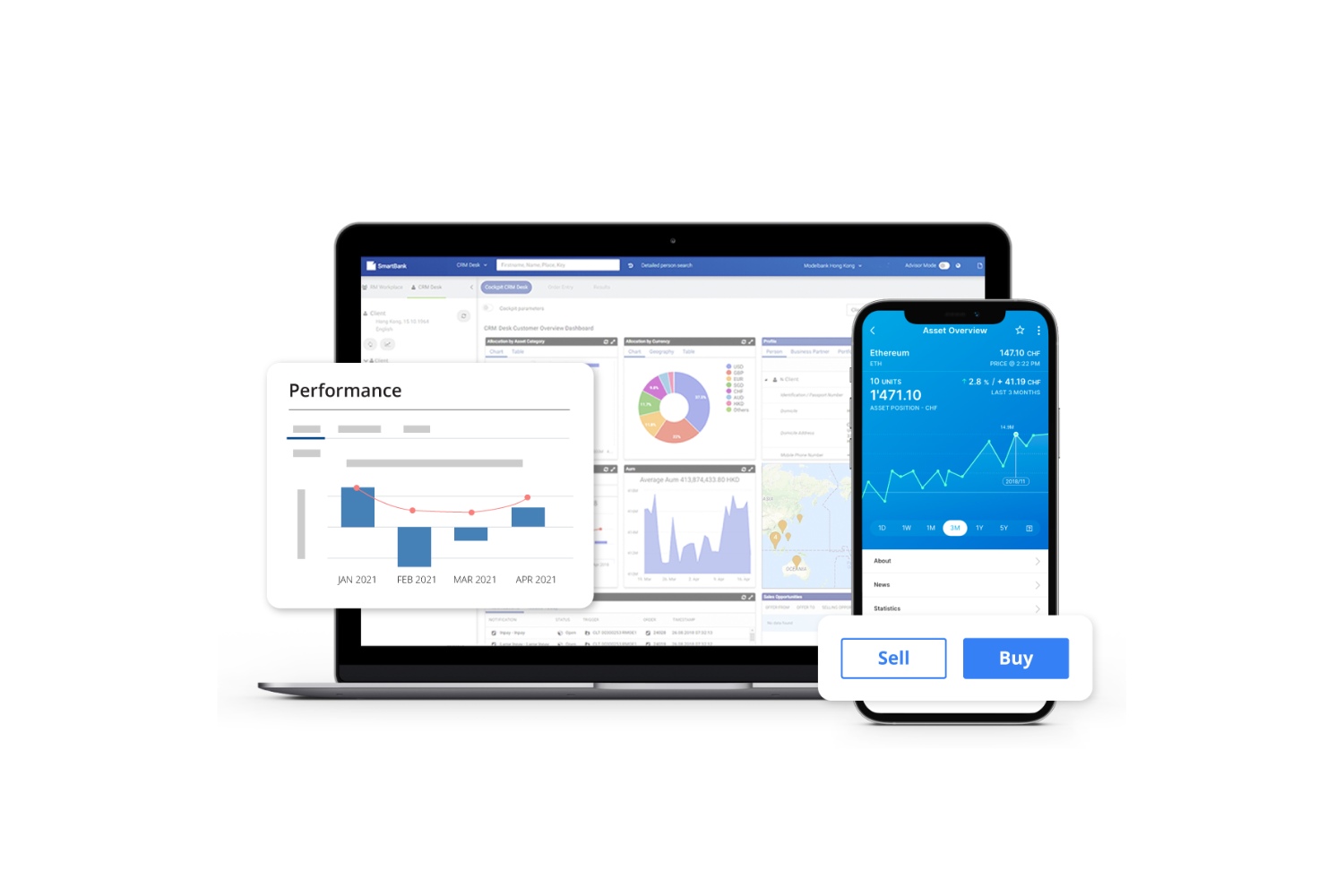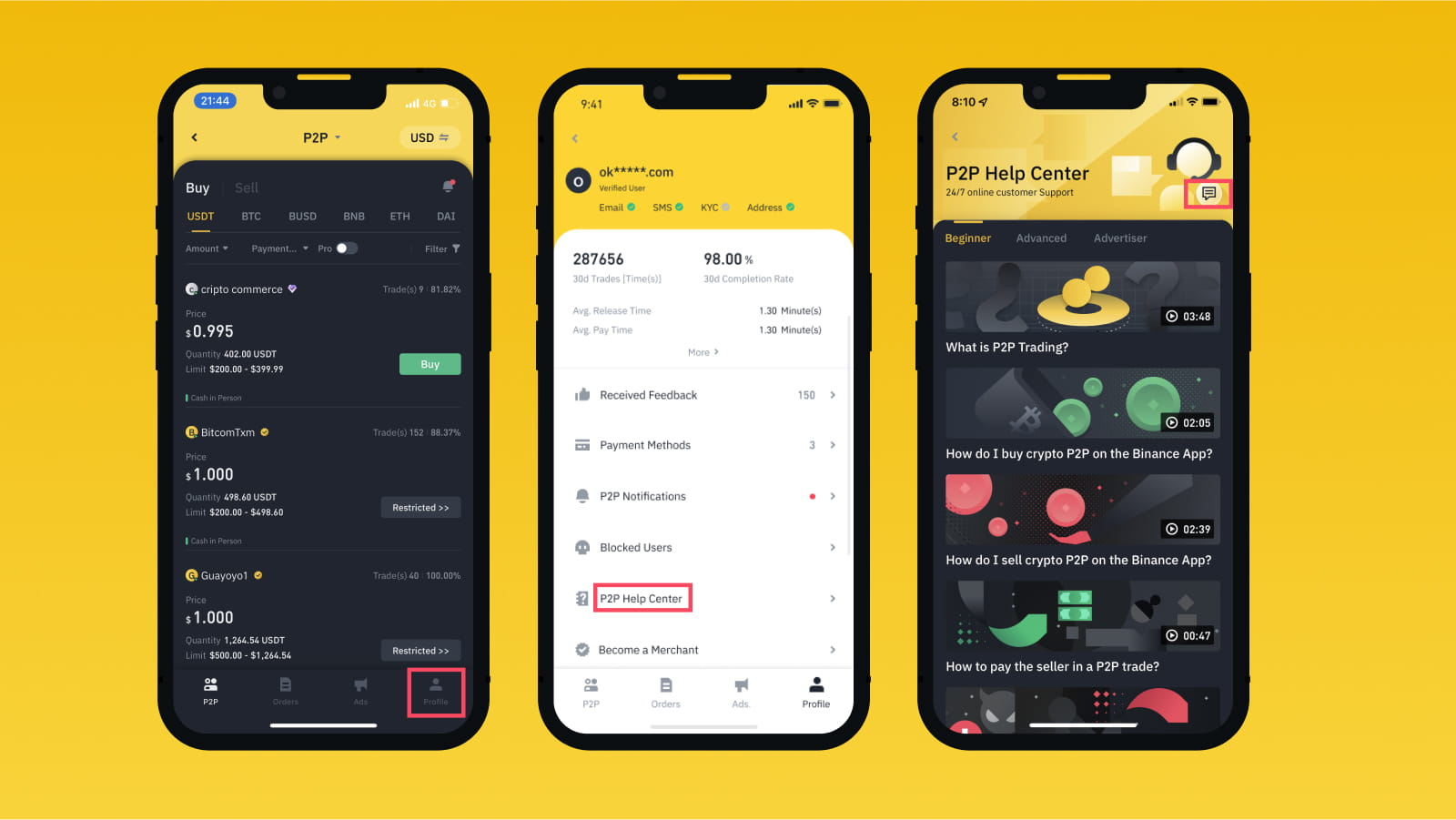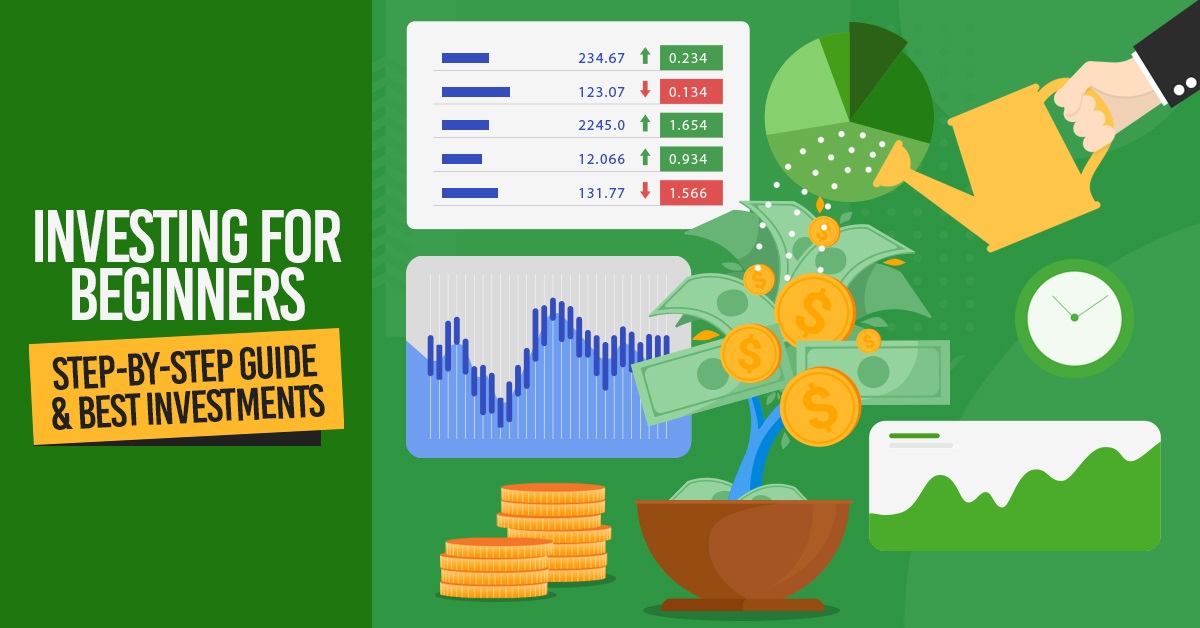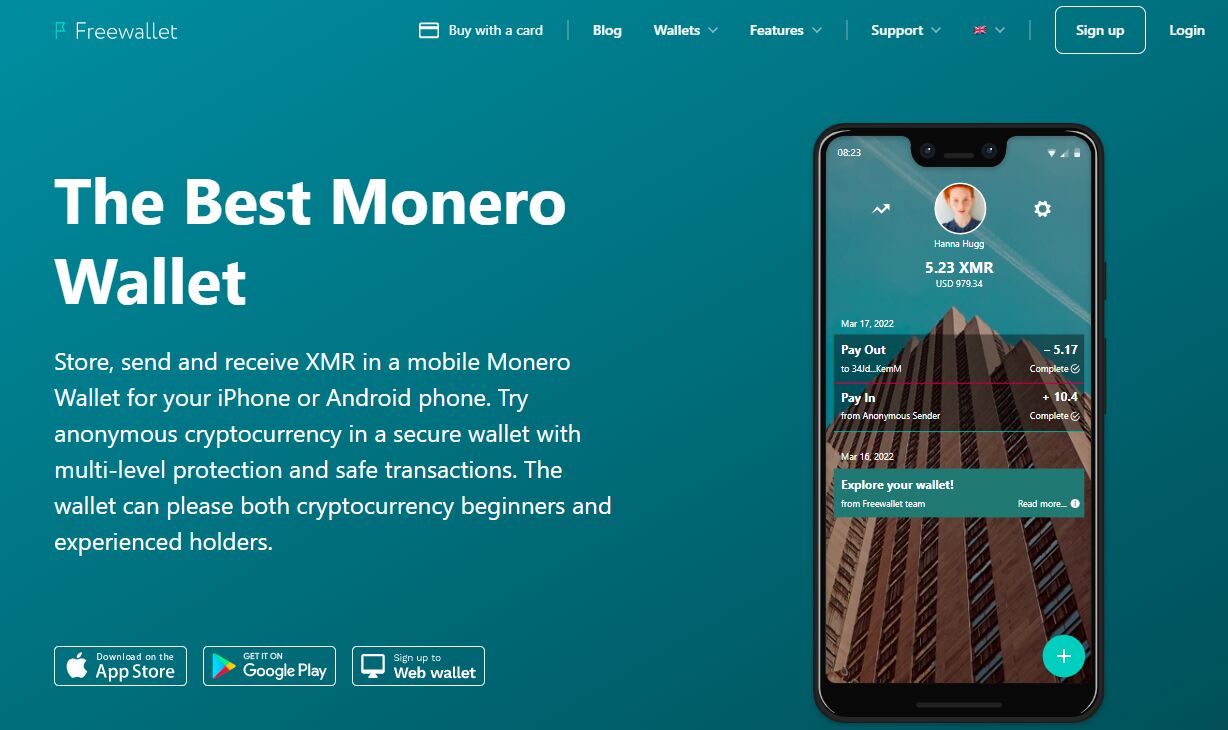Introduction
Welcome to the world of peer-to-peer (P2P) marketplaces! In the digital age, P2P marketplaces have revolutionized the way we buy and sell goods and services. These platforms connect individuals or businesses, allowing them to transact directly with each other, bypassing the traditional intermediaries.
P2P marketplaces have gained immense popularity due to their convenience, cost-effectiveness, and opportunities for individuals to monetize their assets or skills. Whether you want to start a P2P marketplace for accommodation rentals, freelance services, second-hand goods, or even specific niches like fashion or sports equipment, the potential for success is vast.
In this article, we will guide you through the process of starting your own P2P marketplace. From understanding the concept of P2P marketplaces to researching your target market, and from creating a business plan to launching and marketing your platform, we’ll cover all the essential steps to set you on the path to success.
Starting a P2P marketplace requires careful planning, attention to detail, and a customer-centric approach. By following the steps outlined in this article, you’ll be equipped with the knowledge and strategies needed to create a thriving online marketplace that caters to the needs of both buyers and sellers.
So, if you’re ready to dive into the world of P2P marketplaces and unleash your entrepreneurial spirit, let’s get started on this exciting journey together. Discover how to build a platform that not only connects people but also creates new opportunities, fosters trust, and generates a sustainable income for you and your users.
What is a P2P Market Place?
A peer-to-peer (P2P) marketplace is an online platform that connects buyers and sellers directly, eliminating the need for intermediaries such as retailers or service providers. It creates a virtual environment where individuals can transact, exchange goods, or offer services without the traditional constraints of a brick-and-mortar store.
In a P2P marketplace, users can buy or sell various products, rent or lease assets, offer freelance services, or even share resources with others. The concept revolves around utilizing the power of technology to facilitate easy interactions between individuals, establishing a sense of trust, and providing a seamless user experience.
These marketplaces function on a shared economy model, where users leverage their own resources, skills, or talents to generate income or find solutions to their needs. P2P marketplaces offer advantages for both buyers and sellers. Buyers benefit from a wide range of options, competitive pricing, and convenient access to products and services. At the same time, sellers can reach a larger customer base, monetize their assets, and build a reputation within the marketplace community.
One of the prime examples of a P2P marketplace is Airbnb. It allows individuals to rent out their properties or spare rooms directly to travelers, obviating the need for hotel chains. Another well-known P2P marketplace is Uber, which enables people to offer their personal vehicles as a transportation service.
The rise of P2P marketplaces is attributed to several factors. Firstly, advancements in technology have facilitated seamless online transactions, secure payment gateways, and efficient communication channels. Secondly, consumers are increasingly seeking personalized experiences and are more willing to trust individuals rather than relying solely on established brands. Lastly, the sharing economy trend has gained popularity as people embrace sustainable practices and seek cost-effective alternatives.
Creating a successful P2P marketplace requires a deep understanding of your target market, identifying their pain points, and offering innovative solutions. By connecting buyers and sellers directly, you empower individuals to become entrepreneurs, create additional income streams, and foster a sense of community.
In the next section, we will explore the benefits of starting a P2P marketplace and why it can be a lucrative business opportunity. So, let’s dive in and discover the exciting prospects of launching your own P2P marketplace!
Benefits of Starting a P2P Market Place
Starting a peer-to-peer (P2P) marketplace comes with a plethora of benefits for both entrepreneurs and users. Let’s explore some of the key advantages that make P2P marketplaces an attractive business opportunity:
- Lower Costs: P2P marketplaces eliminate the need for middlemen or intermediaries, reducing costs for both buyers and sellers. By connecting them directly, you can offer competitive prices and create a win-win situation for everyone involved.
- Increased Flexibility: P2P marketplaces offer flexibility in terms of products and services. As an entrepreneur, you have the freedom to target various niches or industries and expand your marketplace as you grow. Users can also enjoy the flexibility of choosing from a wide range of options and finding unique or specialized products and services.
- Enhanced User Experience: P2P marketplaces prioritize user experience by providing a seamless and intuitive interface. Users can easily browse, search, and transact within the marketplace, fostering satisfaction and loyalty. Additionally, features such as user ratings and reviews create a sense of trust and transparency among participants.
- Unlocking Underutilized Resources: P2P marketplaces enable individuals to monetize their underutilized resources. Whether it’s renting out a spare room, sharing a car, or offering freelance services, people can leverage their assets or skills to generate income. This not only promotes sustainability but also empowers individuals to become entrepreneurs in their own right.
- Opportunities for Growth: P2P marketplaces possess enormous growth potential. As your user base expands, the network effect comes into play, attracting more buyers and sellers to your platform. This can lead to increased transactions, higher revenues, and an ever-growing community that reinforces the value of your marketplace.
- Building a Community: P2P marketplaces have the unique ability to create a sense of community among users. By connecting like-minded individuals and fostering interactions, your marketplace can become a hub for knowledge sharing, collaboration, and networking. This community-building aspect leads to increased engagement and customer loyalty.
These benefits highlight the immense potential of starting a P2P marketplace. However, it’s important to note that launching and managing a successful marketplace requires careful planning, continuous innovation, and effective marketing strategies. In the next sections, we’ll guide you through the essential steps of researching your market, creating a business plan, and choosing the right platform for your P2P marketplace. So let’s move forward and lay the foundation for your successful venture!
Researching Your Market
Market research is a critical step in the process of starting a peer-to-peer (P2P) marketplace. It allows you to gain insights into your target audience, understand their needs and preferences, and identify any existing competitors. Thorough research will help you make informed decisions and develop a unique value proposition for your marketplace. Here’s how to conduct effective market research for your P2P marketplace:
- Identify Your Target Audience: Begin by defining your target audience. Who are the potential buyers and sellers in your marketplace? What are their demographics, interests, and behaviors? Understanding your audience will enable you to tailor your platform to their specific needs and develop targeted marketing strategies.
- Assess Demand and Supply: Determine the demand and supply dynamics in your chosen industry or niche. Is there a market gap that your P2P marketplace can fill? Analyze existing offerings and identify any unmet needs or opportunities for improvement.
- Analyze Competitors: Conduct a thorough analysis of your competitors, both direct and indirect. Identify their strengths, weaknesses, pricing strategies, and customer experience. This analysis will help you differentiate your marketplace and offer a unique selling proposition to attract users.
- Get User Feedback: Engage with potential users and gather feedback on their pain points, desires, and expectations. This can be done through surveys, interviews, or focus groups. Incorporate this feedback into your platform design and feature development to ensure a customer-centric approach.
- Stay Updated with Industry Trends: Keep a pulse on market trends, technological advancements, and regulatory changes in your industry. This will help you stay competitive and adapt your marketplace to evolving customer needs.
Through comprehensive market research, you will gain a deep understanding of your target market and competitive landscape. This knowledge will inform the key decisions in your business plan, including the features, pricing model, and marketing strategies of your P2P marketplace.
Remember to document your findings and insights. This will help you measure your progress, track changes in the market, and make data-driven decisions as you navigate the exciting journey of launching and growing your P2P marketplace. In the next section, we’ll explore the importance of creating a business plan to guide your entrepreneurial venture. So let’s dive deeper into the planning phase and set a strong foundation for your marketplace’s success!
Creating a Business Plan
A well-crafted business plan is vital for the success of your peer-to-peer (P2P) marketplace. It serves as a roadmap that outlines your goals, strategies, and financial projections. A comprehensive business plan will not only guide you in building and launching your marketplace but also help you secure funding, attract investors, and make informed business decisions. Here are the key components to include in your business plan:
- Executive Summary: Start with a concise overview of your marketplace, highlighting its unique value proposition and competitive advantage. This section should capture the essence of your business and entice readers to explore further.
- Market Analysis: Provide a detailed analysis of your target market, including the size, growth potential, and key trends. Showcase your understanding of customer needs and preferences, as well as the competitive landscape.
- Marketplace Description: Describe your P2P marketplace in detail. Explain the types of products or services it will offer, the target audience you will cater to, and the solution it provides to the market’s needs.
- Business Model: Outline your revenue streams, pricing structure, and monetization strategies. Specify how you will generate income, whether it’s through transaction fees, subscriptions, or advertising partnerships.
- Marketing and Growth Strategy: Detail your marketing and promotion plans to attract users and build awareness. Consider various acquisition channels, such as content marketing, social media, search engine optimization (SEO), and partnerships with influencers or industry experts.
- Operations and Technology: Explain the operational requirements to run your marketplace efficiently. Address aspects such as platform development, technical infrastructure, customer support, and scalability as your user base grows.
- Financial Projections: Include financial forecasts, including revenue projections, expense estimates, and cash flow analysis. Consider different scenarios and be realistic about your revenue growth and profitability. This section demonstrates the financial viability of your marketplace.
- Team and Management: Introduce the key members of your team and highlight their expertise and relevant experience. Investors will be interested in learning about the capabilities of your team to execute the business plan successfully.
- Risks and Mitigation: Identify potential risks and challenges that may impact your marketplace. Develop strategies to mitigate these risks and demonstrate your preparedness in handling unforeseen circumstances.
Creating a business plan requires thorough research, thoughtful analysis, and strategic thinking. As your marketplace evolves, revisit and refine your business plan to align with market dynamics and changing needs. A comprehensive and compelling business plan will not only guide your journey but also serve as an essential tool to attract investors and secure funding.
In the next section, we’ll discuss the importance of choosing the right platform for your P2P marketplace. Let’s dive into the platform selection process and ensure a solid foundation for your marketplace’s success!
Choosing the Right Platform for Your P2P Market Place
Choosing the right platform is a crucial decision when starting a peer-to-peer (P2P) marketplace. It will determine the functionality, scalability, and user experience of your marketplace. Here are some key factors to consider when selecting a platform:
- Customizability: Evaluate the platform’s customization options to ensure that you can tailor it to your marketplace’s unique needs. Look for a platform that allows you to customize the design, layout, and features to align with your branding and user preferences.
- Scalability: Consider the platform’s scalability capabilities. As your marketplace grows, you’ll need a platform that can handle increasing user traffic, transactions, and data volume. Ensure that the platform can accommodate your long-term growth plans.
- Security and Trust: Security is of utmost importance in a P2P marketplace. Look for a platform that offers robust security features, including secure payment gateways, user verification, and data protection measures. Building trust among users is crucial for the success of your marketplace.
- Mobile Responsiveness: With the increasing use of mobile devices, it’s essential to have a platform that is mobile-responsive. This ensures that your marketplace is accessible and user-friendly across various devices, including smartphones and tablets.
- Integration Capabilities: Consider the platform’s integration capabilities with other tools and services. Integrations with analytics platforms, marketing automation software, and customer support tools can streamline your operations and enhance the overall user experience.
- Community and Support: Look for a platform that offers a supportive community and comprehensive customer support. Having access to forums, documentation, and expert advice can be invaluable when you encounter challenges or need assistance in managing your marketplace.
- Pricing Structure: Evaluate the pricing structure of the platform and ensure it aligns with your budget and revenue projections. Consider factors such as transaction fees, monthly subscriptions, and additional charges for customizations or integrations.
- Reviews and Recommendations: Research and gather feedback from other marketplace operators who have used the platform. Read reviews, attend webinars or conferences, and seek recommendations from trusted sources in the industry to ensure the platform’s reliability and suitability for your marketplace.
Take your time to evaluate multiple platform options, request demos, and compare their features and pricing. It’s essential to select a platform that not only meets your current requirements but also allows you to grow and adapt as your marketplace evolves. Remember, transitioning to a new platform later can be time-consuming and costly.
By carefully considering these factors and making an informed decision, you’ll lay a strong foundation for your P2P marketplace and ensure a seamless user experience. In the next section, we’ll discuss the importance of designing a user-friendly and visually appealing P2P marketplace. So let’s move forward and dive into the world of design!
Designing Your P2P Market Place
The design of your peer-to-peer (P2P) marketplace plays a crucial role in attracting and retaining users. A well-designed marketplace not only enhances the user experience but also builds trust, promotes engagement, and reflects your brand’s identity. Here are some essential factors to consider when designing your P2P marketplace:
- User-Friendly Interface: Create an intuitive and user-friendly interface that simplifies navigation and makes it easy for users to browse, search, and transact on your marketplace. Ensure that the design is clean, clutter-free, and responsive across different devices.
- Clear and Concise Information: Provide clear and concise information about each listing or service, including detailed product descriptions, high-quality images, pricing, and availability. Users should be able to quickly understand the key details without any confusion.
- Strong Visual Appeal: Use visually appealing design elements that align with your brand identity and appeal to your target audience. Visual elements such as colors, fonts, and images should evoke the desired emotions and create a memorable experience for users.
- Trust and Security: Incorporate elements that promote trust and security. Display trust badges, user ratings and reviews, secure payment icons, and privacy policies. These elements reassure users and build credibility within your marketplace.
- Intuitive Navigation: Design a clear and logical navigation structure that allows users to easily find the information or services they are looking for. Implement search functionality, filters, and categories to help users refine their searches and discover relevant listings.
- Consistent Branding: Maintain consistent branding throughout your marketplace. Use your logo, colors, and typography consistently across all pages to create a cohesive and recognizable identity for your marketplace.
- Social Engagement: Implement social engagement features such as user profiles, messaging systems, and social sharing buttons. These features encourage user interaction, facilitate communication, and promote a sense of community within your marketplace.
- Responsive Mobile Design: Ensure your marketplace is optimized for mobile devices. With the increasing use of smartphones, a responsive design is essential to provide a seamless user experience on any screen size.
- Accessibility and Inclusivity: Design your marketplace to be accessible to users with disabilities. Consider factors such as screen reader compatibility, keyboard navigation, and color contrast to make your platform inclusive for everyone.
Remember, the design of your marketplace should reflect your brand personality and resonate with your target audience. It should foster trust, encourage engagement, and provide a delightful user experience from start to finish. By prioritizing user-centric design principles and incorporating the essential elements mentioned above, you’ll create a visually appealing and functional P2P marketplace.
In the next section, we’ll discuss the process of building and testing your P2P marketplace to ensure its functionality and quality. So let’s continue our journey and move forward with development and testing!
Building and Testing Your P2P Market Place
Building and testing your peer-to-peer (P2P) marketplace is a critical phase in the development process. During this stage, you’ll bring your design to life and ensure that your marketplace functions smoothly and efficiently. Here’s how to approach the process of building and testing your P2P marketplace:
- Development Process: Collaborate with a skilled development team or utilize a platform’s built-in tools to build your marketplace. Ensure that the development process is aligned with your business requirements and design specifications. Regular communication and feedback loops with the development team are crucial to ensure timely progress and address any challenges that arise.
- Set up the Core Features: Prioritize the implementation of core features and functionalities that are essential for your marketplace’s launch. This may include user account creation, search and filtering options, listings management, messaging systems, and secure payment gateways. Focus on building the foundation of your marketplace before integrating advanced or additional features.
- User Testing: Conduct thorough user testing to identify any usability issues, bugs, or inconsistencies. Engage potential users and gather feedback on their experience navigating and using your marketplace. Incorporate their feedback and make necessary improvements to enhance the user experience and address any pain points.
- Security and Privacy Testing: Ensure that your marketplace is secure and protects user information. Conduct security and privacy testing to identify and address any vulnerabilities. Implement measures such as encryption, data protection, and secure authentication protocols to safeguard user data and transactions.
- Performance Testing: Evaluate the performance of your marketplace by testing its loading speed, responsiveness, and stability. Identify and optimize any areas that may cause delays or functional issues. A fast and reliable marketplace will contribute to a positive user experience and satisfaction.
- Compatibility Testing: Test your marketplace across different web browsers, operating systems, and devices to ensure compatibility and responsiveness. Your marketplace should provide a consistent experience regardless of the platform or device used by the users.
- Iterative Improvements: Use the insights gained from testing to iteratively improve your marketplace. Continuously refine and optimize the user interface, features, and performance based on user feedback and data-driven insights. Regularly test these improvements to ensure they enhance the user experience without introducing new issues.
Building and testing your P2P marketplace requires a combination of technical expertise, attention to detail, and user-centric focus. By investing time and effort in this phase, you can identify and address any issues before the marketplace goes live, ensuring a smooth and seamless user experience from the start.
In the next section, we’ll dive into the exciting process of launching your P2P marketplace and making it available to users. So let’s proceed with the next stage of our journey!
Launching Your P2P Market Place
Launching your peer-to-peer (P2P) marketplace is an exciting and crucial milestone in your entrepreneurial journey. It’s the moment when you make your marketplace available to the public and start attracting users. A successful launch sets the stage for growth and establishes your marketplace’s presence in the market. Here are the key steps to consider when launching your P2P marketplace:
- Pre-Launch Marketing: Build anticipation and generate buzz for your marketplace before the launch. Implement a strategic pre-launch marketing campaign, including social media promotion, email marketing, content creation, and influencer collaborations. Leverage your network and seek partnerships to reach your target audience effectively.
- Create a Marketing Plan: Develop a comprehensive marketing plan that encompasses both online and offline channels. Determine the key platforms and marketing tactics that will help you reach and engage your target audience. Consider strategies such as search engine optimization (SEO), paid advertising, content marketing, and social media marketing to drive traffic to your marketplace.
- Onboarding and Support: Put in place a seamless onboarding process for both buyers and sellers. Provide clear instructions and tutorials on how to create accounts, list products, and make transactions. Offer comprehensive customer support channels such as live chat, email, or phone support to address any questions or issues that users may have.
- Promote Trust and Safety: Build trust among users by implementing trust-building mechanisms such as verified user profiles, secure payment gateways, and transparent user reviews. Communicate your commitment to user safety and privacy, and establish clear policies regarding product quality, refunds, and dispute resolution.
- Monitor and Analyze: Continuously monitor the performance of your marketplace after the launch. Track user activity, engagement metrics, and conversion rates. Analyze user behavior and feedback to identify areas for improvement and optimize your marketplace’s performance.
- Collect and Leverage User Feedback: Encourage users to provide feedback on their experience using your marketplace. Actively listen to their suggestions and concerns and make necessary adjustments to enhance the user experience. Utilize positive user testimonials and reviews to build credibility and attract new users.
- Iterate and Improve: Treat the launch of your marketplace as a starting point, not a finish line. Continuously iterate and improve your marketplace based on user feedback, market trends, and evolving needs. Stay responsive to user demands and introduce new features, categories, or services that add value to your marketplace.
A successful launch involves meticulous planning, strategic marketing, and a commitment to user satisfaction. By focusing on providing a seamless user experience, building trust, and continuously improving your marketplace, you can create a strong foundation for long-term growth and success.
In the next section, we’ll explore the importance of marketing and promoting your P2P marketplace to attract a steady stream of users and drive engagement. Let’s dive into the exciting world of marketing!
Marketing and Promoting Your P2P Market Place
Marketing and promoting your peer-to-peer (P2P) marketplace is crucial to attract users, create awareness, and drive engagement. A well-executed marketing strategy can help you build a strong user base and establish your marketplace as a trusted platform. Here are some effective marketing tactics to consider for your P2P marketplace:
- Content Marketing: Create high-quality content that is valuable and relevant to your target audience. Develop a blog, produce informative videos, or offer guides and tutorials that showcase the benefits of using your marketplace. Share this content through your website, social media channels, and other relevant platforms.
- Search Engine Optimization (SEO): Optimize your website and content for search engines to improve your visibility and organic rankings. Conduct keyword research, optimize meta tags, and ensure your website’s structure is search-engine friendly. Consider acquiring backlinks from reputable sources to increase your authority.
- Social Media Marketing: Leverage the power of social media platforms to reach and engage your target audience. Create captivating posts, share user-generated content, and run targeted advertising campaigns. Engage with your audience, respond to comments and messages promptly, and build a sense of community through social media interaction.
- Influencer Partnerships: Collaborate with influencers or industry experts who have a relevant audience to promote your marketplace. Partnering with influencers can help you reach a wider audience and build credibility through their endorsement. Encourage influencers to create engaging content and share their experiences using your marketplace.
- Referral and Loyalty Programs: Implement referral programs to incentivize users to invite their friends and colleagues to join your marketplace. Offer rewards or discounts for successful referrals to encourage user acquisition. Additionally, establish a loyalty program that rewards active users to foster engagement and repeat transactions.
- Email Marketing: Build an email list and develop targeted email campaigns to nurture relationships with your users. Send personalized emails with relevant updates, product recommendations, and exclusive offers. Use email automation to streamline your communications and keep users engaged even after they have made a transaction.
- Partnerships and Collaborations: Forge partnerships with complementary businesses or organizations to expand your reach. Collaborate on joint marketing campaigns, co-host events, or cross-promote each other’s offerings. These partnerships can help you tap into new audiences and drive mutual growth.
- Paid Advertising: Consider investing in paid advertising to increase your marketplace’s visibility and reach. Utilize platforms such as Google Ads, social media ads, or sponsored content to target your ideal audience. Monitor and optimize your campaigns to maximize return on investment (ROI).
Remember to track and analyze the effectiveness of your marketing efforts using analytics tools. Monitor key metrics such as website traffic, conversion rates, user engagement, and customer acquisition costs. Make data-driven decisions to refine your marketing strategy and allocate resources to the most effective channels and tactics.
Consistency and persistence are key in marketing your P2P marketplace. Continuously experiment, measure results, and refine your marketing approach based on user feedback and market trends. By actively promoting your marketplace and engaging with your target audience, you can build a thriving community and establish a strong brand presence in the market.
In the next section, we’ll discuss the crucial aspects of managing and growing your P2P marketplace. Let’s explore the strategies to ensure the long-term success of your marketplace!
Managing and Growing Your P2P Market Place
Managing and growing your peer-to-peer (P2P) marketplace is an ongoing process that requires careful attention and strategic planning. To ensure the long-term success of your marketplace, you must focus on both operational and growth-oriented aspects. Here are key strategies to consider for managing and growing your P2P marketplace:
- User Engagement and Satisfaction: Prioritize user satisfaction by providing exceptional customer support and promptly addressing any issues or concerns. Foster engagement by encouraging user-generated content, facilitating community forums, and promoting collaboration among users.
- Continuous Improvement: Actively gather user feedback and use it to iterate and improve your marketplace. Regularly update and optimize features, functionalities, and user interface based on user needs and preferences. Stay ahead of the competition by innovating and introducing new features or services that add value to the user experience.
- Quality Control: Maintain quality standards on your marketplace by ensuring listings are accurate, products meet specified criteria, and services satisfy user expectations. Implement a review process to monitor the quality of listings and user interactions. Building trust in the marketplace will contribute to user loyalty and attract new users.
- Community Management: Nurture your marketplace community by facilitating meaningful interactions, providing constructive guidance, and rewarding active participants. Encourage users to share their experiences, knowledge, and insights. Foster a sense of belonging and make users feel valued as part of the community.
- Growth Strategies: Develop growth strategies to expand your user base and increase transaction volume. Explore partnerships, collaborations, or affiliate programs with relevant businesses or organizations. Implement targeted marketing campaigns to attract new users and encourage user retention through initiatives such as referral programs or loyalty rewards.
- Data Analysis: Leverage data analytics tools to gain insights into user behavior, preferences, and transaction patterns. Analyze key metrics such as user retention rates, conversion rates, and transaction frequency to identify opportunities for growth and improvement. Make data-driven decisions to optimize your marketplace’s performance.
- Scaling and Expansion: Plan for scalability from the start, ensuring your marketplace can handle increased user activity and transaction volume. Assess opportunities to expand into new geographic markets or target new user segments. Consider offering additional categories or services based on user demand and market trends.
- Building Trust and Safety: Develop and maintain strong trust and safety measures to instill confidence in your users. Continuously monitor and address any fraudulent activities or potential security breaches. Implement user verification, secure payment systems, and robust dispute resolution processes to ensure a secure and reliable marketplace environment.
Managing and growing your P2P marketplace requires a customer-centric approach, continuous improvement, and strategic decision-making. By actively managing user engagement, maintaining quality standards, and implementing growth strategies, you can navigate the challenges and seize the opportunities to build a successful and sustainable P2P marketplace.
In the final section, we’ll conclude our journey and summarize the essential steps to start and manage a thriving P2P marketplace. So let’s summarize our learnings and conclude our discussion!
Conclusion
Starting and managing a successful peer-to-peer (P2P) marketplace requires careful planning, strategic decision-making, and a user-centric approach. Throughout this guide, we have explored the essential steps involved in creating and growing a P2P marketplace. Here is a recap of the key takeaways:
1. Understand the concept of a P2P marketplace: P2P marketplaces connect buyers and sellers directly, offering convenience, cost-effectiveness, and opportunities for individuals to monetize their assets or skills.
2. Conduct thorough market research: Research your target audience, assess demand and supply, analyze competitors, and gather user feedback to identify unmet needs and create a unique value proposition.
3. Create a comprehensive business plan: Outline your marketplace’s goals, market analysis, business model, marketing strategies, and financial projections. A strong business plan serves as a roadmap for success.
4. Choose the right platform: Evaluate and select a platform that offers customization options, scalability, security features, and integration capabilities to support your marketplace’s needs and growth.
5. Design a user-friendly marketplace: Focus on creating an intuitive and visually appealing interface, incorporating trust and security elements, and ensuring mobile responsiveness to enhance the user experience.
6. Build and test your marketplace: Collaborate with a development team to bring your design to life, conduct thorough testing to ensure functionality, usability, security, and performance.
7. Launch your marketplace: Execute a pre-launch marketing campaign, onboard users seamlessly, and promote trust and safety. Monitor user feedback and metrics to make continuous improvements.
8. Market and promote your marketplace: Utilize content marketing, SEO, social media, influencer partnerships, email marketing, and paid advertising to attract and engage users and establish a strong brand presence.
9. Manage and grow your marketplace: Focus on user engagement, continuous improvement, quality control, community management, data analysis, and trust-building measures to foster user satisfaction and drive growth.
By following these steps and staying dedicated to delivering an exceptional user experience, you can establish and grow a thriving P2P marketplace. Remember that success in the marketplace industry requires continuous adaptation, innovation, and a deep understanding of your users’ needs. Stay agile, listen to user feedback, and constantly evolve your marketplace to stay ahead in a dynamic and competitive landscape.
Now it’s time to put your knowledge into action and embark on your journey to create a successful P2P marketplace. Good luck and enjoy the exciting and rewarding experience that awaits you!

























